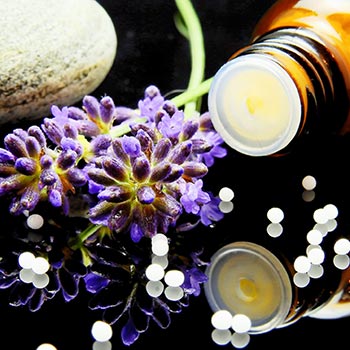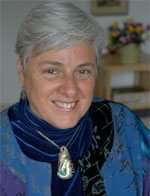
According to the World Health Organization, homeopathy is the second largest type of therapy in the world. It is used successfully by millions of people around the globe to treat acute medical conditions and chronic diseases.
Usage in the United States
It’s interesting to note that the American health care system ranks 37th in the world for its performance in health care. [1] Since our health care system relies heavily on conventional medicine, only about 2% of the U.S. population uses homeopathy.
If we look at France, which is ranked number 1 in the world, we find 40% of the general population uses homeopathic medicines and 30% of its family physicians prescribe them. Another country that relies heavily on homeopathy is Britain. 17% of the British population uses homeopathy remedies and 42% of physicians have referred patients to homeopathic doctors. The royal family is one of its strongest advocates, with both Queen Elizabeth and Prince Charles’ going to homeopathic physicians. [2]
Since the beginning of homeopathy’s rise in the United States, conventional medicine has opposed it, even though homeopathy’s role in helping people heal from the epidemics of the 19th century, such as scarlet fever, cholera, diphtheria, and malaria, are well-documented. [3]
During these epidemics, homeopathic treatment cut the death rate by 10 to 30 times compared to conventional medicine. During the worldwide Spanish flu, the mortality rate in the U.S. for people who were treated with homeopathy was 0.7% compared to 30% for conventional medicine. [4]
Although homeopathy is used worldwide, there are many people in the United States who are not familiar with the benefits of this healing modality or they confuse it with herbal remedies, supplements, and vitamins.
Homo what?
I decided some years ago to teach an introductory class in homeopathy in order to educate people about the practical use and efficacy of this healing modality. I also wanted to dispel the many myths and common misconceptions about homeopathy.
The impetus to teach this course was the result of an encounter I had while vacationing on the beach one summer in Ogunquit, Maine.
One day I cut my index finger quite badly while folding a beach chair. As there was blood everywhere my sister insisted on calling an ambulance. Meanwhile, I opened my homeopathic first aid kit and began to treat my wound. First I took Arnica 200 c for the trauma and shock of pain, and then I washed my finger in Calendula tincture to stop the bleeding. In seconds the bleeding ceased and I moved on to my next remedy which was Hypericum 200 c.
Hypericum is used for nerve damage with throbbing or shooting pain, and within minutes after taking this remedy the pain was gone and I carefully wrapped my finger up to heal.
A short time later, a young paramedic arrived and my sister hastily pointed to me as the patient to be treated. While I felt quite confident at this point I didn’t need any medical help, I showed him my finger which had formed a thin scab and was clearly healing. The paramedic expressed surprised that it looked so good so quickly as it was quite a gash. When asked what had I done I told him I treated myself with homeopathy.
“Homo what?” the paramedic exclaimed!
I quickly realized this medic had never heard of homeopathy and somehow this didn’t seem like the right time to go into a long explanation. I assured him that my finger was doing well. My sister, who in a panic had called the emergency ambulance line, was watching anxiously as I calmly explained again I was fine and didn’t need further assistance. He then insisted I come and at least get a tetanus shot. I said there wasn’t any need of that either because I had already taken another homeopathic remedy for the ill effects of puncture wounds-Ledum 200c.
At this point, the paramedic looked at me like I was completely crazy and just asked me to sign the necessary papers so he could leave. I was quite relieved, my finger no longer hurt, and I now was free to tend to my sister whose anxiety only increased when I refused to get a tetanus shot! I am not advocating against tetanus shots but I had read enough of the old homeopathic literature to know how successful Ledum was to prevent and even treat tetanus.
What is homeopathy?
People I meet every day ask me what is homeopathy and how does it work?
One must begin by considering the two great laws of healing which were written as far back as the Vedas, the ancient Sanskrit texts from over 3,500 years ago. The Law of Opposites and the Law of Similars. The Egyptians, Babylonians, Greeks, and Arabs were all familiar with these laws and both Hippocrates in the 4th century and Paracelsus in the 15th century were aware of them too.
The Law of Opposites and the Law of Similars
Most people are familiar with the Law of Opposites. Every time you take an anti– biotic, anti-inflammatory, or anti-depressant you are using this law. The law of opposites works when a medicine is given to counter a symptom to create the opposite effect and there is a certain chemical forcing of the body to do so.
The Law of Similars acts quite differently. The Law of Similars says that to cure a symptom, a medicine is given that in a healthy person would bring about similar symptoms. For example, if you have spring allergies and your symptoms manifested in a profuse watery and burning discharge, one remedy which might be indicated is Allium Cepa (common onion). If you have ever peeled a few onions you recognize these symptoms!
One of the biggest barriers to understanding homeopathy, however, is not with this law of nature (Law of Similars). Even vaccinations are a crude use of this principle. The biggest barrier to understanding homeopathy is how the remedies are potentized.
Homeopathic remedies consist of quantum doses of natural substances which beyond 12 c have no molecular chemistry. Paradoxically the “higher” the dose (potency of the remedy) often the greater the ability the remedy has to trigger a deep healing response.
In the infinite wisdom of the body and its innate intelligence, we find that homeopathic remedies “mimic” similar symptoms that a sick person is experiencing and combined with the quantum potency of the remedies are a catalyst to gently and effectively restore health.
Who discovered homeopathy?
Dr. Samuel Christian Frederic Hahnemann M.D. (1755-1843) was a well-regarded German physician to German royalty and a respected author on chemistry. He spoke at least 8 languages and was a brilliant scholar and translator of medical texts.
Concerned about the barbaric medical practices of his day (bloodletting, doses of mercury and arsenic, lack of hygiene awareness), Hahnemann developed homeopathy to create a more humane way of healing.
He was very successful in treating cholera and typhoid fever because he understood the need to isolate patients during epidemics and complete bed rest. He also was a pioneer in the humane treatment for the insane and successfully treated many insane people with homeopathy. [5]
He is called the Father of Experimental Pharmacology because he verified his results through scientific experimentation. He prepared the remedies by diluting the original substances and succussing them (shaking vigorously) to create quantum doses. He then experimented on himself and other volunteer doctors to record and find out the results. His experiments spanned over 40 years of research!
Hahnemann really established Homeopathy as a medical practice based on the idea that the body has the innate ability to heal itself.
If you understand the Law of Similars and know how to apply it correctly, you can advance your health in profound ways that are deep acting, safe to use, and energetic at their source.
How can homeopathy help you?
According to the National Center for Homeopathy, a nonprofit research center, there are four reasons for choosing homeopathy:
- You oversee your own health and homeopathy is easy to use.
- Natural Relief. Homeopathic remedies are made from natural substances and made in safe potencies.
- Accessibility. Many homeopathic remedies are available over the counter in natural food stores, compound pharmacies, and online.
- Affordability. They cost a fraction of the price of most medications. [6]
Start with Homeopathic First Aid
One of the easiest ways to introduce yourself to homeopathy is to take a class on first aid or buy a book on homeopathy and purchase a homeopathic first aid kit which can be used at any time.
In terms of deciding what potency to use, the more severe the emergency, the higher the dose. If you fall down and get bruised, a 30 c Arnica will help but if you are in a major car accident a 200 c is a better potency to use first.
As in deciding any remedy, the important thing is to always individualize and find the most similar homeopathic remedy for the situation by taking into account the totality of the characteristic symptoms. So, 5 people have allergies and depending on their symptoms and modalities (what makes it better, what makes it worse) you could have 5 different recommended remedies.
Having said this, we do know from experience that when it comes to first aid and physical trauma there are certain remedies to think of and use right away.
Children and adults (moms mostly) often have unexpected emergencies and so the more prepared you are to deal with them the better.
For example, if your child wakes up on a Saturday night with a high fever, hot face, and no doctor to call. There are many remedies that can help but Belladona is often indicated. A few pellets under the tongue and in a short time later the child’s fever drops and the healing has begun.
How many children playing outside or playing sports injure themselves and come running in for help. A quick dose of Arnica (for physical injuries) can save the day! If the child breaks a bone, give Arnica first, get the bone set, and then begin a course of Symphytum. You will cut the healing time in half!
Another child gets stung by a bee and cries out with a throbbing pain…reach for the remedy Apis mellificus (bee sting, anaphylactic shock).
If there is a tick bite bring out the remedy Ledum and take it immediately. When I head into the woods I always bring Ledum, Arnica, and Neem oil (best tick repellent I have found).
If you vaccinate your child, Ledum can also be used to help with the effects of a puncture wound.
If your child or anyone in your family gets burned from the stove or touching a hot object, Cantheris will do the trick. A few doses and the pain should subside considerably.
It doesn’t mean you don’t consult further medical help when you use homeopathy, only that the remedies help the body begin to heal.
Spring Allergies
Do you or your child suffer from spring allergies with runny noses, sneezing, and itchy eyes? Instead of running for over-the-counter medication, why not figure out what remedy can help you or your child the most? Some possibilities are….
Allium Cepa (common onion): The nose and eyes both stream with lots of watery discharge but the nasal discharge burns. The person is often better outside in cool air and worse in a warm room.
Euphrasia (eyebright): The main focus with anyone who needs this remedy are the eyes which have acrid burning, and intense itchiness. The nose discharge doesn’t irritate the way Allium cepa does but unlike Allium cepa, the person prefers to stay in a dark room.
While there are many more helpful remedies, certainly Sabadilla must also be included as a possibility. Someone who needs Sabadilla is excessively sneezing with a runny nose and frontal sinus pain, and there can be a peculiar symptom of intense itching in the nose with itching in the roof of the mouth.
Finally, there’s poison ivy! Ugh. If you have ever had the rash and itchiness of this plant, then you know any relief is welcome.
The first remedy to think of is Rhus Tox which is better with hot scalding water on the itchy often blistery rash (as hot as it is possible to bathe in). If you see the first blister appear or know you have touched poison ivy, wash with some Dr. Bronner soap and take a dose of Rhus tox.
Women’s Self Care
Menstrual Cramps
Menstrual cramps and PMS can occur for many reasons, but when cramps are intense it’s great to reach for a homeopathic remedy for help. While there are many remedies which can be used, two of the most common are Mag phos and Colocythis. Both are relieved by pressure and heat but with Mag phos the relief from heat is more prominent, while the pressure from doubling over is more distinguished in Colocynthis. Colocynthis is also more irritable in mood.
Bladder Infections
How many women have had a bothersome bladder infection in their lives and repeated round after round of antibiotics? Two remedies to look for are Cantheris and Berberis. Cantheris is probably the most common remedy for bladder infections. With Cantheris there is a strong, frequent urge to urinate with intense burning during urination. With Berberis there can be pain before and after urination and pain is usually worse with motion or pressure and there is often accompanying back or hip pain.
Vaginitis
If Vaginitis is a problem there are numerous remedies which can help but two should be checked out first to see if they match the characteristic symptoms of the condition. Kreosotum is one of the first remedies to look at in Vaginitis. With this remedy, there is a lot of rawness of the vagina, soreness and a foul smell, and the discharge is worse standing. Borax is another useful remedy but the discharge is clear and thick, like the white of an egg or even liquid starch.
Homeopathy for Chronic Conditions
Homeopathy can also help women’s chronic health conditions. Endometriosis, infertility, menopause, osteoporosis, and fibromyalgia, (a condition that is found more in women than men) are just a few of the health challenges homeopathy can address. Seeking a qualified homeopathic physician is the first step to moving in a healing direction with chronic problems for women.
Recently a woman told me that after visiting her homeopathic physician she canceled her surgery to have an enlarged ovarian cyst removed. After taking a homeopathic remedy a week later she had an MRI and it was gone! Her doctor called and was surprised it had resolved.
Dr. Alfred Pulford, an experienced American doctor in the late 1800’s had many successful personal experiences helping women in labor using homeopathy. He once said, “Homeopathy is woman’s choicest gift from heaven”. [7]
Some Final Thoughts…
With an overmedication epidemic taking place and an out of control opioid addiction problem, it is important to find safe, secure, and effective ways to let the body heal from pain.
First, do no harm should be the number one concern in any healing therapeutics.
Homeopathy is both an art and a science and homeopathic medicines are neither harmful nor dangerous.
Self-reflection, self-perception, and self-patience are cultivated when you introduce homeopathy into your life. From birth to death, homeopathy can play a profound role in the health of women and their families.
As the world renown homeopath, Dr. Andre Saine said,
“One does not believe in homeopathy, one experiences it” [8]
Disclaimer notice: This information is intended for educational purposes only and not meant to substitute for medical care or to prescribe for any specific health conditions.
Footnotes:
- Murray CJL, Frenk J, Ranking 37th — Measuring the Performance of the U.S. Health Care System. New England Journal of Medicine. 362;2 January 14, 2010.http://www.huffingtonpost.com/dana-ullman/homeopathic-medicine-euro_b_402490.html.
- Ullman, Dana. Homeopathic Medicine: Europe’s #1 Medical Alternative. http://www.huffingtonpost.com/dana-ullman/homeopathic-medicine-euro_b_402490.html; also: Fisher, Peter, and Ward, Adam, “Complementary Medicine in Europe,”British Medical Journal, July 9, 1994, 309:107-110. Abstract: https://www.ncbi.nlm.nih.gov/pubmed/8038643.
- Bradford Dr. Thomas The Logic of Figures. 1900.
- Saine, Dr. Andre, Organic Consumers Association, “What is Homeopathy”, https://www.organicconsumers.org/news/what-homeopathy
- Whole Health Now http://www.wholehealthnow.com/bios/samuel-hahnemann.html
- National Center for Homeopathy, 2017 http://www.homeopathycenter.org/news/its-world-homeopathy-awareness-week
- Andre Pulford, Alfred, Dr. M.h.S. F.A.C.T Personal Experiences with Homeopathy in Obstetrics. http://www.homeopathy.ca/articles_det15.shtml
- Saine, Dr. Andre, Organic Consumers Association, “What is Homeopathy” https://www.organicconsumers.org/news/what-homeopathy


